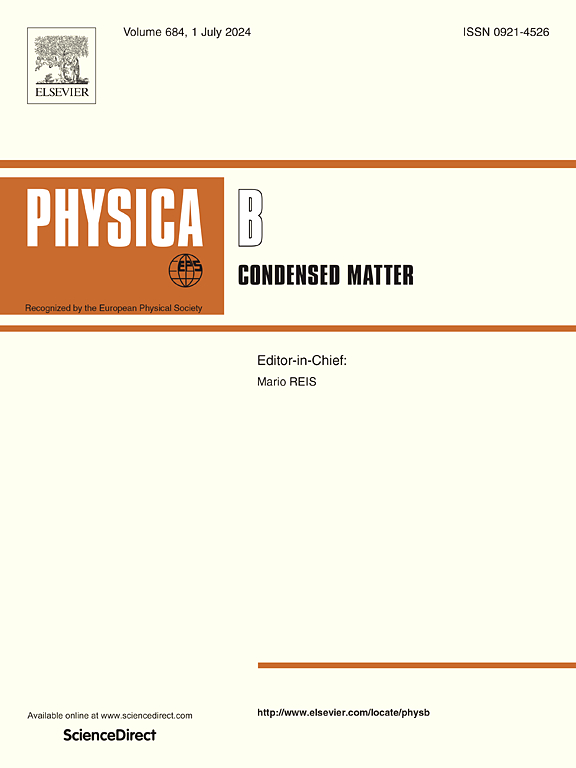通过纳米孔隙度调整InTe膜的热力学性能:分子动力学方法
IF 2.8
3区 物理与天体物理
Q2 PHYSICS, CONDENSED MATTER
引用次数: 0
摘要
分子动力学模拟揭示了纳米孔隙度(0-20.1%)和温度如何严重影响碲化铟(InTe)薄膜的纳米电子应用。力学性能随着孔隙率的增加而逐渐降低:在孔隙率为2.32-20.1%时,杨氏模量从43.5 GPa(原始)下降了9.7-37.9%,而极限强度则呈现各向异性降低(锯齿形降低21.4-50.0%,锯齿形降低32.8-61.2%)。当孔隙率为20.1%时,由于声子散射,导热系数下降49.5% (40.36 ~ 20.4 W/m K),但随着系统长度缩放(38 ~ 152 nm),导热系数增加68.4 ~ 85.4%。温度导致断裂模式从之字形向扶手椅型转换,并加剧声子-缺陷相互作用。观察到的与长度相关的热增强表明,纳米结构是一种有效的补偿孔隙性损失的策略。这项工作提供了一个计算框架,用于定制InTe膜以满足特定的应用需求,平衡纳米电子和能量转换设备的结构完整性和热管理需求。本文章由计算机程序翻译,如有差异,请以英文原文为准。
Tailoring thermal and mechanical properties of InTe membranes through nanoporosity: A molecular dynamics approach
Molecular dynamics simulations reveal how nanoporosity (0–20.1%) and temperature critically influence indium telluride (InTe) membranes for nanoelectronic applications. Mechanical properties degrade progressively with porosity: Young’s modulus declines from 43.5 GPa (pristine) by 9.7–37.9% across 2.32–20.1% porosity, while ultimate strength shows anisotropic reduction (21.4–50.0% zigzag, 32.8–61.2% armchair). Thermal conductivity drops 49.5% (40.36 to 20.4 W/m K) at 20.1% porosity due to phonon scattering, yet increases 68.4–85.4% with system length scaling (38 to 152 nm). Temperature induces fracture mode switching from zigzag to armchair propagation and exacerbates phonon-defect interactions. The observed length-dependent thermal enhancement suggests nanostructuring as an effective compensation strategy for porosity-induced losses. This work provides a computational framework for tailoring InTe membranes to specific application requirements, balancing structural integrity against thermal management needs in nanoelectronics and energy conversion devices.
求助全文
通过发布文献求助,成功后即可免费获取论文全文。
去求助
来源期刊

Physica B-condensed Matter
物理-物理:凝聚态物理
CiteScore
4.90
自引率
7.10%
发文量
703
审稿时长
44 days
期刊介绍:
Physica B: Condensed Matter comprises all condensed matter and material physics that involve theoretical, computational and experimental work.
Papers should contain further developments and a proper discussion on the physics of experimental or theoretical results in one of the following areas:
-Magnetism
-Materials physics
-Nanostructures and nanomaterials
-Optics and optical materials
-Quantum materials
-Semiconductors
-Strongly correlated systems
-Superconductivity
-Surfaces and interfaces
 求助内容:
求助内容: 应助结果提醒方式:
应助结果提醒方式:


